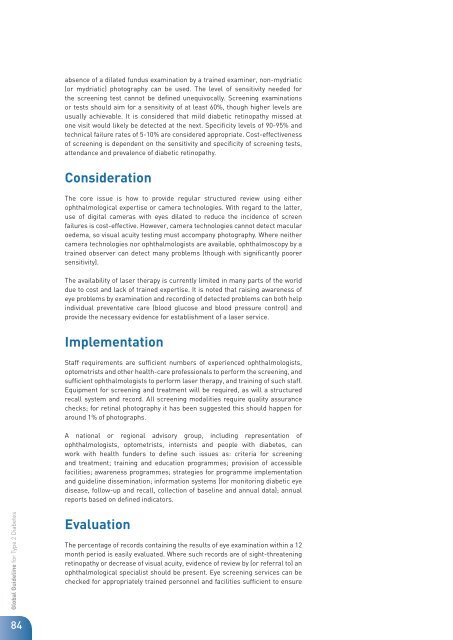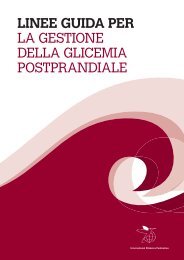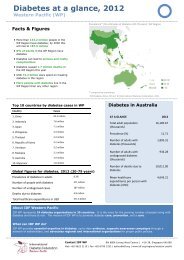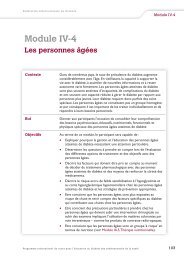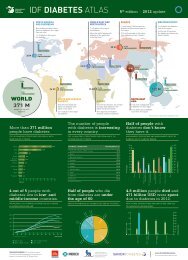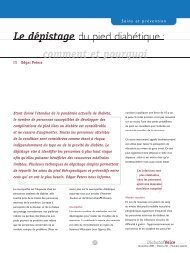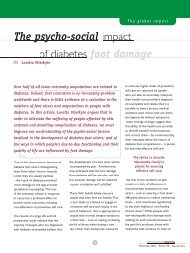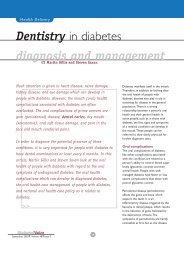Evidence-base - International Diabetes Federation
Evidence-base - International Diabetes Federation
Evidence-base - International Diabetes Federation
You also want an ePaper? Increase the reach of your titles
YUMPU automatically turns print PDFs into web optimized ePapers that Google loves.
Global Guideline for Type 2 <strong>Diabetes</strong><br />
84<br />
absence of a dilated fundus examination by a trained examiner, non-mydriatic<br />
(or mydriatic) photography can be used. The level of sensitivity needed for<br />
the screening test cannot be defined unequivocally. Screening examinations<br />
or tests should aim for a sensitivity of at least 60%, though higher levels are<br />
usually achievable. It is considered that mild diabetic retinopathy missed at<br />
one visit would likely be detected at the next. Specificity levels of 90-95% and<br />
technical failure rates of 5-10% are considered appropriate. Cost-effectiveness<br />
of screening is dependent on the sensitivity and specificity of screening tests,<br />
attendance and prevalence of diabetic retinopathy.<br />
Consideration<br />
The core issue is how to provide regular structured review using either<br />
ophthalmological expertise or camera technologies. With regard to the latter,<br />
use of digital cameras with eyes dilated to reduce the incidence of screen<br />
failures is cost-effective. However, camera technologies cannot detect macular<br />
oedema, so visual acuity testing must accompany photography. Where neither<br />
camera technologies nor ophthalmologists are available, ophthalmoscopy by a<br />
trained observer can detect many problems (though with significantly poorer<br />
sensitivity).<br />
The availability of laser therapy is currently limited in many parts of the world<br />
due to cost and lack of trained expertise. It is noted that raising awareness of<br />
eye problems by examination and recording of detected problems can both help<br />
individual preventative care (blood glucose and blood pressure control) and<br />
provide the necessary evidence for establishment of a laser service.<br />
Implementation<br />
Staff requirements are sufficient numbers of experienced ophthalmologists,<br />
optometrists and other health-care professionals to perform the screening, and<br />
sufficient ophthalmologists to perform laser therapy, and training of such staff.<br />
Equipment for screening and treatment will be required, as will a structured<br />
recall system and record. All screening modalities require quality assurance<br />
checks; for retinal photography it has been suggested this should happen for<br />
around 1% of photographs.<br />
A national or regional advisory group, including representation of<br />
ophthalmologists, optometrists, internists and people with diabetes, can<br />
work with health funders to define such issues as: criteria for screening<br />
and treatment; training and education programmes; provision of accessible<br />
facilities; awareness programmes; strategies for programme implementation<br />
and guideline dissemination; information systems (for monitoring diabetic eye<br />
disease, follow-up and recall, collection of <strong>base</strong>line and annual data); annual<br />
reports <strong>base</strong>d on defined indicators.<br />
Evaluation<br />
The percentage of records containing the results of eye examination within a 12<br />
month period is easily evaluated. Where such records are of sight-threatening<br />
retinopathy or decrease of visual acuity, evidence of review by (or referral to) an<br />
ophthalmological specialist should be present. Eye screening services can be<br />
checked for appropriately trained personnel and facilities sufficient to ensure


